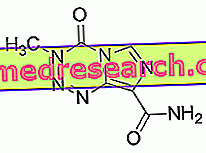
Pharmaceutical knowledge is an important part of Tibetan medical science and art. This doctrine is based on numerous theories and laws, based on logic, study and experience.
Interview with a medical Lama
In which cases is Tibetan medicine best suited?
In my experience, Tibetan medicine is particularly effective with diseases of the mind; but also in gynecological diseases, in problems of the thyroid, kidneys, skin, gall bladder and in cases of swollen glands.

Q: I've heard of "magic remedies". Can you explain something about it?
A: Sometimes, in Tibetan medicine, we use remedies that have no active ingredients; we can say that they are "magic". For example, water and cream pills. These two pills, one white and the other red, can be used with water or a neutral cream. If you use them with the cream, you can spread the cream in places where you have pain or some discomfort. Or put the pills in a liter of clean water (like spring water; mineral water is fine too). You drink a glass in the morning, for example, or more often, as you think best. Continue adding water as you consume it until the pills have completely dissolved. These pills are made of clay and blessed substances; moreover, they are prepared by reciting many mantras. The red pill is called lokyon rilbu or Parnashavari pill. In ancient times, at the Segyu monastery in Tibet, they used to make these pills with water from a special source near the monastery, which was dedicated to Parnashavari. It was believed that this source could cure infectious diseases. In Tibet these pills were used a little for everything, like aspirin here in the West! Since they are very light they were then used a lot for children. They are useful in case of headaches, various pains, small wounds and so on. Sometimes they give incredible results even with serious illnesses.
Q: Tibetan medicine is very effective for various diseases. But what makes it really different from other medical systems?
A: Beyond its effectiveness in treating many diseases, an important aspect of Tibetan medicine is the fact that it really takes care of the patient. I mean: the work of an Amji does not consist only in placing a diagnosis and then indicating the treatment, but also in offering help and positive energy. This is one of the reasons people go back to Tibetan medicine.
Q: Are we talking about the power of mantras and prayers?
A: Yes. The power of prayers in Tibetan medicine is highly regarded, because our medicine is closely connected with Buddhism. When a doctor administers a medicine, or a therapy, he must generate the thought that this medicine serves to cure the patient present but, at the same time, also all those who suffer from the same illness. In this way it transmits positive energy to all beings. It is the mind of Bodhicitta. Naturally, in this way, the patient also heals better, because there is a great difference between a purely material substance and the same substance accompanied by such positive energy.
There is a story in the sutras about the power of prayers. A man was walking by a canal that was drying up when he saw that there were fish that were dying. Taken with pity, he poured new water into the canal to save them. Then he prayed that the fish would have a good revival in the Pure Land of Tushita (in Tibetan Dewa Chen). After some time people came to see him in a dream to thank him. They were the fish he had saved and that for the power of his prayers were reborn to Dewa Chen. But prayers can also have negative results. There is another story about the construction of the Bodhgaya Stupa. When they finished building it, everyone who had contributed to the work was thanked one by one, even the animals. But they forgot to thank the ox who had transported so many stones to build the Stupa. The ox got so angry that he prayed he could be reborn in such conditions that he could destroy the Dharma. Much later, he was reborn as Langdarma, the infamous Tibetan king who persecuted Buddhism with such fury that he could almost make it disappear from Tibet.
Short glossary of Tibetan medicine:
Amji in Tibetan means doctor, healer.
Bodhicitta is the "great mind"; the strong determination to reach enlightenment for the benefit of all sentient beings.
Dharma: spiritual teachings, the path to inner development.
Dewa Chen or Tushita: a pure land, a kind of paradise.
Stupa: a special type of construction that generates positive energy
Parnashavari: a feminine aspect of the enlightened mind; wears clothes of leaves.
The foundations of Tibetan Medicine
The five elements, Earth, Water, Fire, Air and Space, are the material basis of animated and inanimate phenomena.
The fundamental principles of Tibetan medical pharmacognosy are based on the doctrine of the five elements. This, in turn, is based on the law of constitutive uniformity of all material bodies, including the human body and medicinal substances.
To determine the use and effectiveness of a medicine, its properties, efficacy, taste and action are also taken into consideration. The physical and chemical constituents of a medicinal plant act as a substrate for the properties and action of the drug.
To proceed with the evaluation of a drug, that is to say the identification and determination of its quality and purity, different methods are used, but the most important is undoubtedly the sensory evaluation, mainly gustatory and olfactory.
Tibetan medicine, pharmacognostic aspects »



